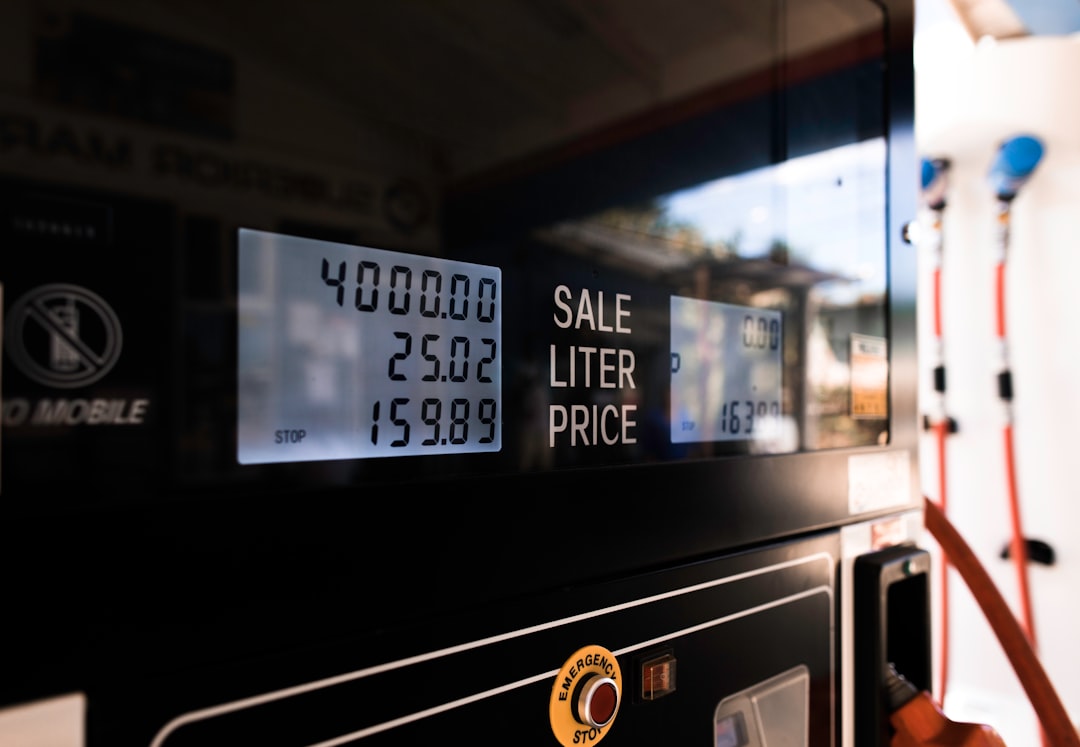What is it about?
UV light emerges as a potent decontaminant for chemical warfare agents (CWAs). Utilizing TiO2/Ti as a catalyst, this study investigates UV photocatalytic decontamination efficiency against 2-chloroethyl phenyl sulfide. The introduction of Au, Pt, and Cu onto TiO2/Ti surface is explored. UVC light reveals eight secondary byproducts, while Au overlay notably boosts activity under UVB, uncovering valuable insights for CWA decontamination.
Featured Image

Photo by Fulvio Ciccolo on Unsplash
Why is it important?
The application of ultraviolet (UV) light for the decontamination of chemical warfare agents (CWAs) has gained recognition as an effective method, especially for treating hard-to-reach areas where wet chemical methods are impractical. In this study, TiO2/Ti was employed as a model catalyst, which was contaminated with 2-chloroethyl phenyl sulfide (CEPS), and subjected to photocatalytic decontamination using both UVB and UVC light. Additionally, photocatalytic decontamination efficiency by introducing Au, Pt, and Cu onto the TiO2/Ti surface was explored. During the photodecomposition process under UVC light, at least eight distinct secondary byproducts were identified. It was observed that the introduction of overlayer metals did not significantly enhance the photodecomposition under UVC light instead overlaid Au exhibited substantially improved activity under UVB light. Whereas, photodecomposition process under UVB light, only five secondary products were detected, including novel compounds with sulfoxide and sulfone functional groups. This novel study offers valuable insights into the generation of secondary products and sheds light on the roles of overlayer metals and photon wavelength in the photodecontamination process of CWA.
Perspectives
The application of ultraviolet (UV) light for the decontamination of chemical warfare agents (CWAs) has gained recognition as an effective method, especially for treating hard-to-reach areas where wet chemical methods are impractical. In this study, TiO2/Ti was employed as a model catalyst, which was contaminated with 2-chloroethyl phenyl sulfide (CEPS), and subjected to photocatalytic decontamination using both UVB and UVC light. Additionally, photocatalytic decontamination efficiency by introducing Au, Pt, and Cu onto the TiO2/Ti surface was explored. During the photodecomposition process under UVC light, at least eight distinct secondary byproducts were identified. It was observed that the introduction of overlayer metals did not significantly enhance the photodecomposition under UVC light instead overlaid Au exhibited substantially improved activity under UVB light. Whereas, photodecomposition process under UVB light, only five secondary products were detected, including novel compounds with sulfoxide and sulfone functional groups. This novel study offers valuable insights into the generation of secondary products and sheds light on the roles of overlayer metals and photon wavelength in the photodecontamination process of CWA.
Professor Mohammad Mansoob Khan
Universiti Brunei Darussalam
Read the Original
This page is a summary of: Ultraviolet Light‐Assisted Decontamination of Chemical Warfare Agent Simulant 2‐Chloroethyl Phenyl Sulfide on Metal‐Loaded TiO2/Ti Surfaces, ChemistryOpen, February 2024, Wiley,
DOI: 10.1002/open.202300246.
You can read the full text:
Resources
Ultraviolet Light-Assisted Decontamination of Chemical Warfare Agent Simulant 2-Chloroethyl Phenyl Sulfide on Metal-Loaded TiO2/Ti Surfaces
The application of ultraviolet (UV) light for the decontamination of chemical warfare agents (CWAs) has gained recognition as an effective method, especially for treating hard-to-reach areas where wet chemical methods are impractical. In this study, TiO2/Ti was employed as a model catalyst, which was contaminated with 2-chloroethyl phenyl sulfide (CEPS), and subjected to photocatalytic decontamination using both UVB and UVC light. Additionally, photocatalytic decontamination efficiency by introducing Au, Pt, and Cu onto the TiO2/Ti surface was explored. During the photodecomposition process under UVC light, at least eight distinct secondary byproducts were identified. It was observed that the introduction of overlayer metals did not significantly enhance the photodecomposition under UVC light instead overlaid Au exhibited substantially improved activity under UVB light. Whereas, photodecomposition process under UVB light, only five secondary products were detected, including novel compounds with sulfoxide and sulfone functional groups. This novel study offers valuable insights into the generation of secondary products and sheds light on the roles of overlayer metals and photon wavelength in the photodecontamination process of CWA.
Ultraviolet Light-Assisted Decontamination of Chemical Warfare Agent Simulant 2-Chloroethyl Phenyl Sulfide on Metal-Loaded TiO2/Ti Surfaces
The application of ultraviolet (UV) light for the decontamination of chemical warfare agents (CWAs) has gained recognition as an effective method, especially for treating hard-to-reach areas where wet chemical methods are impractical. In this study, TiO2/Ti was employed as a model catalyst, which was contaminated with 2-chloroethyl phenyl sulfide (CEPS), and subjected to photocatalytic decontamination using both UVB and UVC light. Additionally, photocatalytic decontamination efficiency by introducing Au, Pt, and Cu onto the TiO2/Ti surface was explored. During the photodecomposition process under UVC light, at least eight distinct secondary byproducts were identified. It was observed that the introduction of overlayer metals did not significantly enhance the photodecomposition under UVC light instead overlaid Au exhibited substantially improved activity under UVB light. Whereas, photodecomposition process under UVB light, only five secondary products were detected, including novel compounds with sulfoxide and sulfone functional groups. This novel study offers valuable insights into the generation of secondary products and sheds light on the roles of overlayer metals and photon wavelength in the photodecontamination process of CWA.
Contributors
The following have contributed to this page










